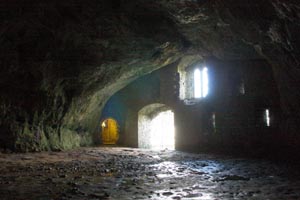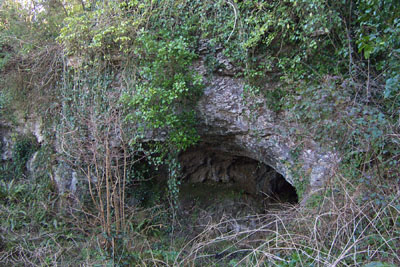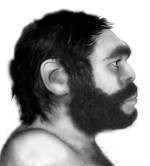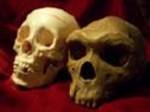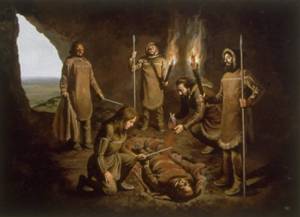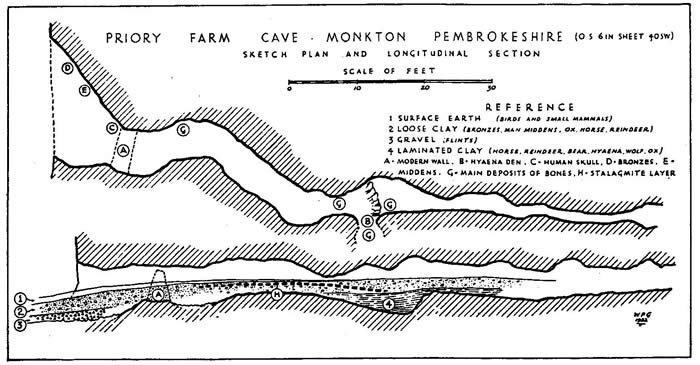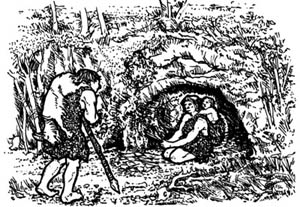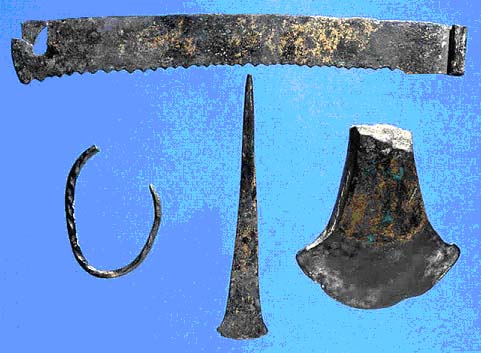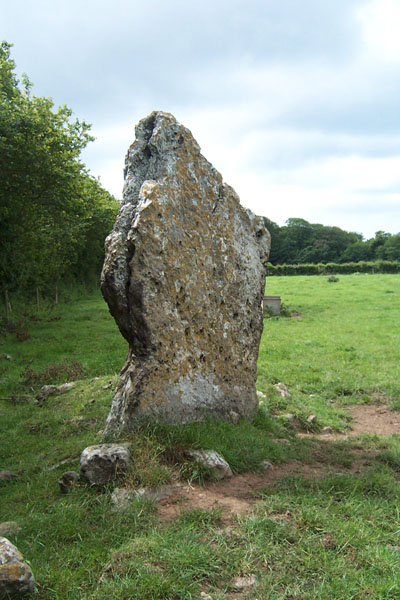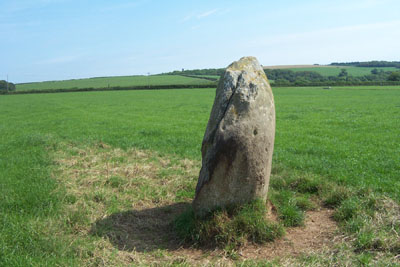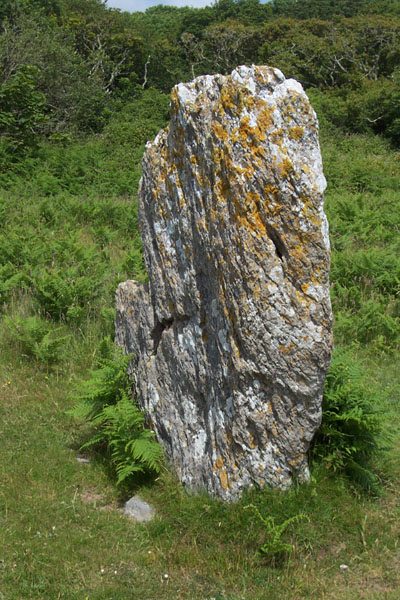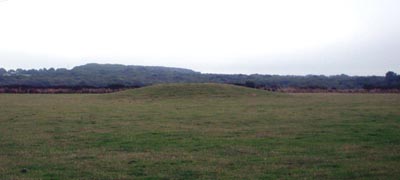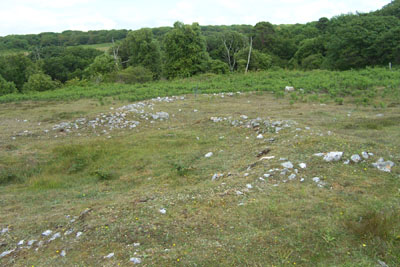
| HOME | ABOUT | PEMBROKE | MONKTON | TIMELINE | MUSEUM | LANDSCAPE | GALLERIES | PUBLICATIONS | CONTACTS |
Pembroke history story
THE ARCHAEOLOGY OF PEMBROKE & DISTRICT
Pembroke Castle stands above The Wogan cave which was perhaps occupied by Pembroke's first inhabitants. It has not been excavated, but a very short distance away high on the bank, which rises steeply above the southern shore of the Pembroke River we find Catshole Cave or Priory Farm Cave which has been excavated and, according to archaeological evidence found there, we know that humans lived here over 10,000 years ago.
The evidence places our first Pembroke people towards the end of the Late Stone Age or Upper Palaeolithic Period. Confused about Archaelogical periods? Archeologists have developed systems to describe the different eras in prehistory based on the technologies of the time. Here's a little chart.
350,000 - 10,000 BC: PALAEOLITHIC or THE OLD STONE AGE350,000 BC - 10,000 BC: Lower Palaeolithic During this period we see the first humans emerge. These earliest inhabitants were nomadic hunters and gatherers, forced by seasonal changes to follow migrating animals. They lived in small family groups in the open, often beside rivers in a mainly forested landscape. The earliest evidence of humans in Wales was found in Pontnewydd Cave in Denbighshire dating back to about 225,000 BC.
70,000 BC - 30,000 BC: Middle Palaeolithic
30, 000 BC – 10,000 BC: Upper Palaeolithic The Neanderthals died out, disappearing around 30,000 BC and were gradually replaced by the first fully modern humans who came to Britain from mainland Europe around 30,000 years ago. In appearance they would have looked very much like us.
10,000 – 4,000 BC: MESOLITHIC OR MIDDLE STONE AGE During the last Ice Age this place we now call Pembroke could not sustain life as the land was covered in ice. Then about 10,000 years ago the climate warmed, signalling the end of the last ice age. As the ice sheets and glaciers retreated north and the land thawed out, peope started to migrate northwards following and hunting large herds of large animals eg reindeer, horse, wild cattle and elk. As the ice retreated and the climate improved, Southern Britain (which was still linked to the European landmass) became suitable for permanent settlement. There was an explosion of life – plants & forests grew, animals and people multiplied. These people were the Hunter Gatherers. They lived in our caves and left their remains which lay undisturbed until Dr Syles and Mr Dixon carried out their excavations in Cats Hole Cave in 1906.
NEOLITHIC - THE NEW STONE AGE: 4,000 - 2500 BC As time slowly passed, so did the patterns of human existence. Around 4,000 BC a social revolution took place which saw the evolution of man from hunter gatherer to farmer with the spread of farming technology into Britain from across the Channel . This was the New Stone Age, when human beings abandoned their nomadic way of life following the herds of wild animals and developed new lifestyles, clearing the land to build settlements, plant crops of wheat and barley and raise domesticated sheep, cattle and pigs. They built stone monuments and made pottery.
THE END OF THE STONE AGE: 2,500 BC - 800 BC: THE BRONZE AGE As the ages of stone passed into those of Bronze, it would appear that people flourished in this community of ours. Around 2,500 BC, new metalworking technologies arose across Europe, spread throughout Britain by migrating metal workers. They are known to us as the Beaker People, so called because of the shape of the pottery vessels which are so often found in their round barrow graves. There is no clear division between Neolithic and Bronze Ages: change was a slow and gradual process. Initially, metal was a rare commodity, only used by the social elite for special objects of prestige and display. Many hundreds of years passed by before metal replaced flint in weapon and tool production. The Bronze Age saw the construction of henges and standing stones: the most famous being Stone Henge. There is plenty of evidence of these peoples all around us in the standing stones, the large numbers of tumuli or burial mounds and even the remains of a Bronze Age village at Bosherston.
Towards the end of the Bronze Age the climate changed drastically. Many settlements were abandoned and it seems likely that warfare and banditry erupted as people fought over land that could no longer support them. This may have led to the construction of the first defended hilltop settlements which abound in this area, the range of weapons produced and in the emergence of the warrior chieftain. The Iron Age Peoples emerge – a people who spread their language and culture throughout Europe and who gave Wales its identity and language which remains to this day.
|
I
Paleolithic or Old Stone Age |
Mesolithic or Middle Stone Age |
Neolithic or New Stone Age |
The Bronze Age |
| The Iron Age |
